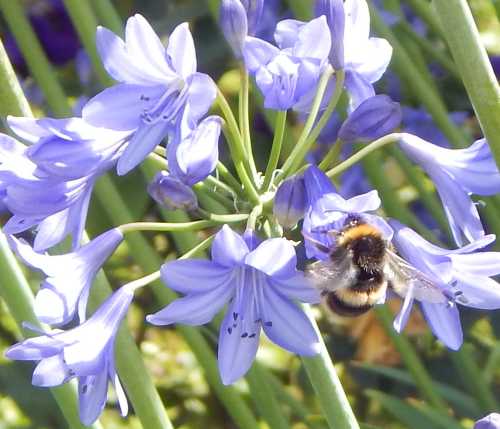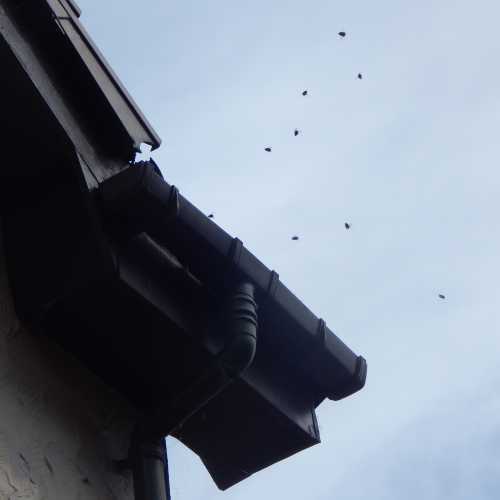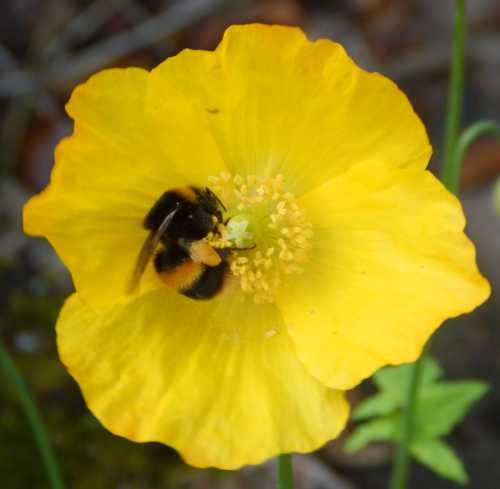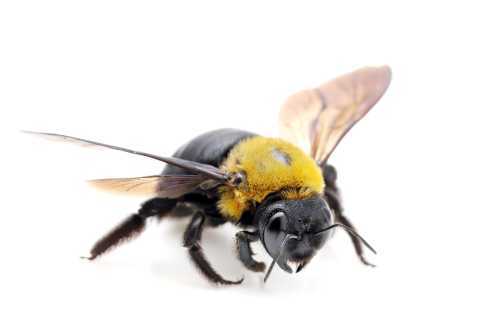How Do Bees Get In The House? Why Can't They Find Their Way Out?
Bees may enter your property either accidentally, and therefore, temporarily, or they may enter whilst seeking a cavity for a nest site. Bumble bee queens might be looking for a snug place to overwinter.
But how do bees get in the house, and once inside, why do they struggle to find their way out again?
How Bees Can Enter Your Property
The most common means of entry to your property, is accidental entry via an open door or window.
This is especially common with bumble bee queens when they are looking for a place to establish a nest. I have written about this phenomenon in more detail – see my page: Why Do Bees Fly Into Windows?
Bees can also enter via vents, especially in the kitchen or bathroom, or through gaps around the fascia boards that allow access into the attic.
The chimney could also be a route into the house for bees.

So Bees Got In The House – Why Can’t They Find Their Way Out Again?
Often, bees are attracted to a dark cavity as a potential location for a nest. However, once in the living space inside a home, a room is suddenly much lighter, although it appeared to be a dark cavity from the outside.
The bees are hence in a situation where, from the outside, they were potentially exploring a dark, cavity, but once inside, they are in a wide open, lighter space.
Bees will try to escape by finding their way to the brightest light source within that space. This is why they will automatically enter skylights, or fly to the window.
A practical method to help bees find a way out, is to darken the room if you can. If you have more than one window, close the blinds or curtains to all windows apart from one. The bee will make its way to the light. Open the window wide, and allow the bee to fly out.
If you have a skylight, prevention is better than cure. Some form of transparent screen preventing insects getting trapped in the first place, would help. Please see my page: Bees In The Skylight.
An exception occurs in winter. Late in autumn, bumble bee queens will seek out a place to overwinter. For this reason, I sometimes hear of bumble bees being found in a dark, unused room.
Personally, I would leave it alone if it is not causing any inconvenience, or I would find a snug place where it is well sheltered and warm, but can easily gain access to the outdoors when spring arrives. Take into account that bumble bees only have a certain tolerance to cool temperatures.
Bees Nesting In The House
 Active bumble bee nest of Bombus hypnorum in house eaves. This nest will naturally decline as the colony dies out.
Active bumble bee nest of Bombus hypnorum in house eaves. This nest will naturally decline as the colony dies out.Usually, the communication I receive from visitors to the website concerns bumble bee nests. These are temporary, and can be left alone in 99.9% of cases, in my view.
However, nesting honey bees are a different matter.
Honey bees that create a nest inside the wall cavity of your home will require professional assistance. For further information, please visit: Bee Nest In Wall Cavity.
A honey bee nest is not temporary, and could expand dramatically in size, housing many thousands of bees producing honey and wax.
Honey bees will sometimes nest in chimneys, but whether or not a removal is required depends on where it is. If the chimney is attached to your home, you’ll need to have it removed. However, I have heard of people allowing honey bee nests to remain in disused chimneys in outbuildings. Please see Bee Nest In Chimney.
How To Prevent Bees Getting In The House
Sometimes, it’s unavoidable, but transparent blinds, screens or even netting can be used to create a barrier at windows and doors to block at least one type of entry route whilst allowing them to be opened.
For further assistance, please visit Help With Bees to view a variety of scenarios and advice.
If you found this page helpful or interesting, I'd really be grateful if you would share it with others - if not this page, perhaps another, such as Gardening For Bees.
Thank you so much :) .

